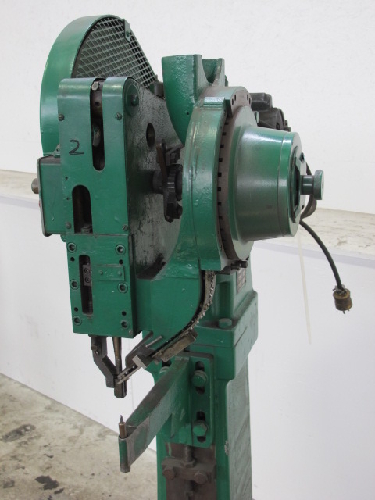Art;
Thanks for this data. A while back I remember seeing a rivet installation tool on a website. The price did not look too high and I might eventually get one if I run into many more issues like this one. I don't know exactly how the person who broke this AC receptacle managed to damage it, but the body was pushed back into the chassis and the metal retention flange on the inside of the chassis was still riveted to the chassis! It must have been given a really hard hit with something.
Pop rivets, while useful for some items, do have their issues as you noted. I have not installed any steel pop rivets and have my doubts about doing it. I have had difficulties enough with the aluminum ones and do not like their looks after the job is done. I used 4-40 hardware to install the replacement socket that I had on hand. It looks different than using rivets, but is sturdy and can be redone later if I ever get a rivet installation tool. Somewhere in my bookmarks of browsed sites I have a link to the company who advertised their rivet installation tool. I need to look it up again.
I have a Bud Box that I plan to use for installing a MPX-65 converted to a WX type in my 202-R tuner. It will be lying at the rear of the 202-R inside its wooden cabinet (with an extension set of wood panels at the rear). I was looking at it today and plan to reduce the height of the bud box down to the approximate 2 inch height of the Fisher chassis.
In the meantime, this 200-B works so well it surprises me.
Joe



 ) I do quite a bit of this type of work,and have a proper tubular rivet,eyelet and turret installation setup,with different clinchers and setters for each application.I have one foot-operated press for doing typical chassis work and terminal boards,and a hydraulic-jack monster that I made that clamps into a huge bench vise.This is for doing heavy,large work (think Ampeg SVT and V-series amps,McIntosh MC-2xx etc.) that exceeds the throat depth of my small press.
) I do quite a bit of this type of work,and have a proper tubular rivet,eyelet and turret installation setup,with different clinchers and setters for each application.I have one foot-operated press for doing typical chassis work and terminal boards,and a hydraulic-jack monster that I made that clamps into a huge bench vise.This is for doing heavy,large work (think Ampeg SVT and V-series amps,McIntosh MC-2xx etc.) that exceeds the throat depth of my small press.
















